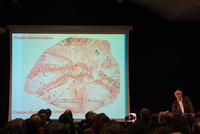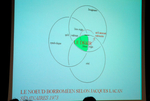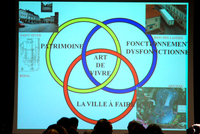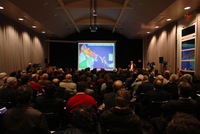Michel Cantal-Dupart: "Towards a new way of designing a town"
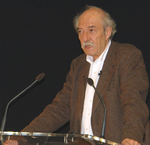
Greater Paris is a unique experience in history. "Never before had architects been asked to think about a town without a program, says Michel Cantal-Dupart. It was made into a national event that will become an international event because the idea is now being copied by many capitals throughout the world." But what makes Paris? Where are the malfunctions? What could be the strong points for Greater Paris?
Michel Cantal-Dupart's team has focused its studies on nine main concepts from the structurally and racially mixed city to the City of Arts and exceptional buildings, guided by three main principles, namely the town on the town, interlinking of public transport and integration of sensitive zones into the development.
Fix town boundaries
"We determined the boundaries of Paris and we thought that we needed to fix town boundaries, continued Michel Cantal-Dupart. In other words, we should stop expansion that occurs at the detriment of densification and arable land. Why not envisage "land fronts" just like sea fronts? A town that looks at the countryside? Greater Paris must be built on itself, if only to protect this farmland in green belts around towns: "It is important to reinstate market gardening as close as possible so that towns can be fed from their own surroundings."
Michel Cantal-Dupart is inspired by the spirit of Fulgence Bienvenüe, the father of the Paris metro, in an attempt to rethink services provided by public transport. We need to find an alternative to the current spider web network, in which all communication systems inevitably lead to the centre of Paris. "Interlinked public transport" that connects the centre to the periphery, but also different parts of the periphery to each other: "The first metro line was the 1900 universal exhibition line that connected the Place de l'Etoile to the Bastille, passing through Le Châtelet, he says. But the second line led to La Nation via Barbès-Rochechouart. Fulgence Bienvenüe had originally imagined the circumferential line. But unlike what might be thought, most of the buildings facing the elevated line on Barbès Boulevard were built after construction of the Metropolitan line."
Construction of the town follows the same random process as crystallisation, for which it is impossible to predict the location at which the first crystal will appear under given physical conditions: "The only thing that we do know is that the end result will be a completely homogeneous crust. Crystallisation is the way of developing a region without prejudging emergence of the first crystal. When looking at a region, it doesn't really matter if the development begins with a school here, a road there, a museum somewhere else, if all this equipment knows how it participates in the overall crystallisation."
One town and one speed
Paris is exceptional in that it operates at several speeds. There are several worlds adjacent to each other namely the touristic centre, the La Défense business area and the Val Fourré district, but they do not intersect. "But there is no question of a development without solving malfunctions and without integrating sensitive zones into the development ", confirms Michel Cantal-Dupart. Greater Paris is a wonderful opportunity to bring marginal areas back into the heart of the city. It is also an opportunity to favour the crystallisation of a large research and state-of-the-art activity zone, a French Silicon Valley as expressed by the President and originally envisaged on the Saclay plateau. Michel Cantal-Dupart's team has redrawn its contours as a function of use and a global project called "the 4 valleys". "Why restrict ourselves to a single small plateau (Saclay), while by including the Yvette, Bièvre, Orge and Seine valleys, we can integrate large research centres and our large universities, for example Pitié-Salpêtrière, la Sorbonne, and Nanterre?" Michel Cantal-Dupart believes that the Seine and its tributaries are the link binding Greater Paris, the genuine missing link between all satellite towns around the historic Paris. The town cannot be ordered, "it organises itself around successive wishes." And the river that was the original reason for the existence of the capital can be at the heart of this desire. "With pleasure and the art of living as part of it."

